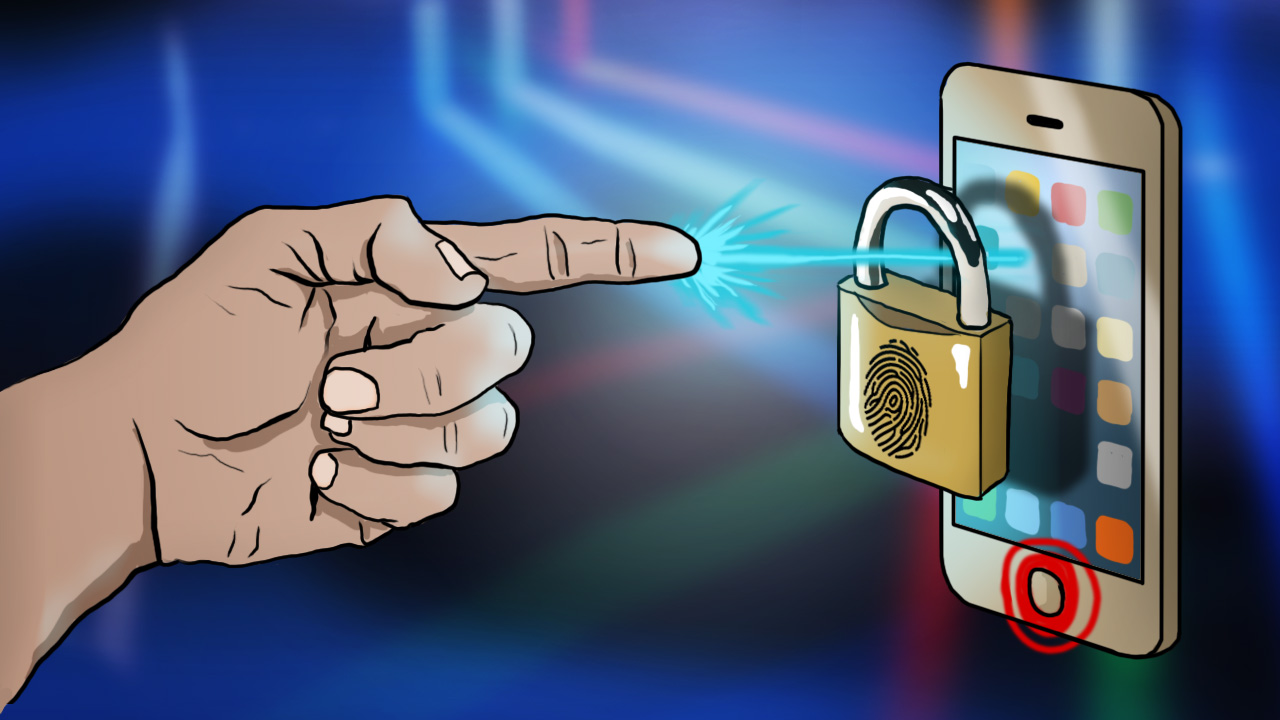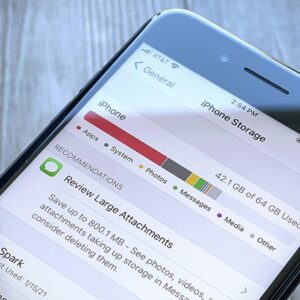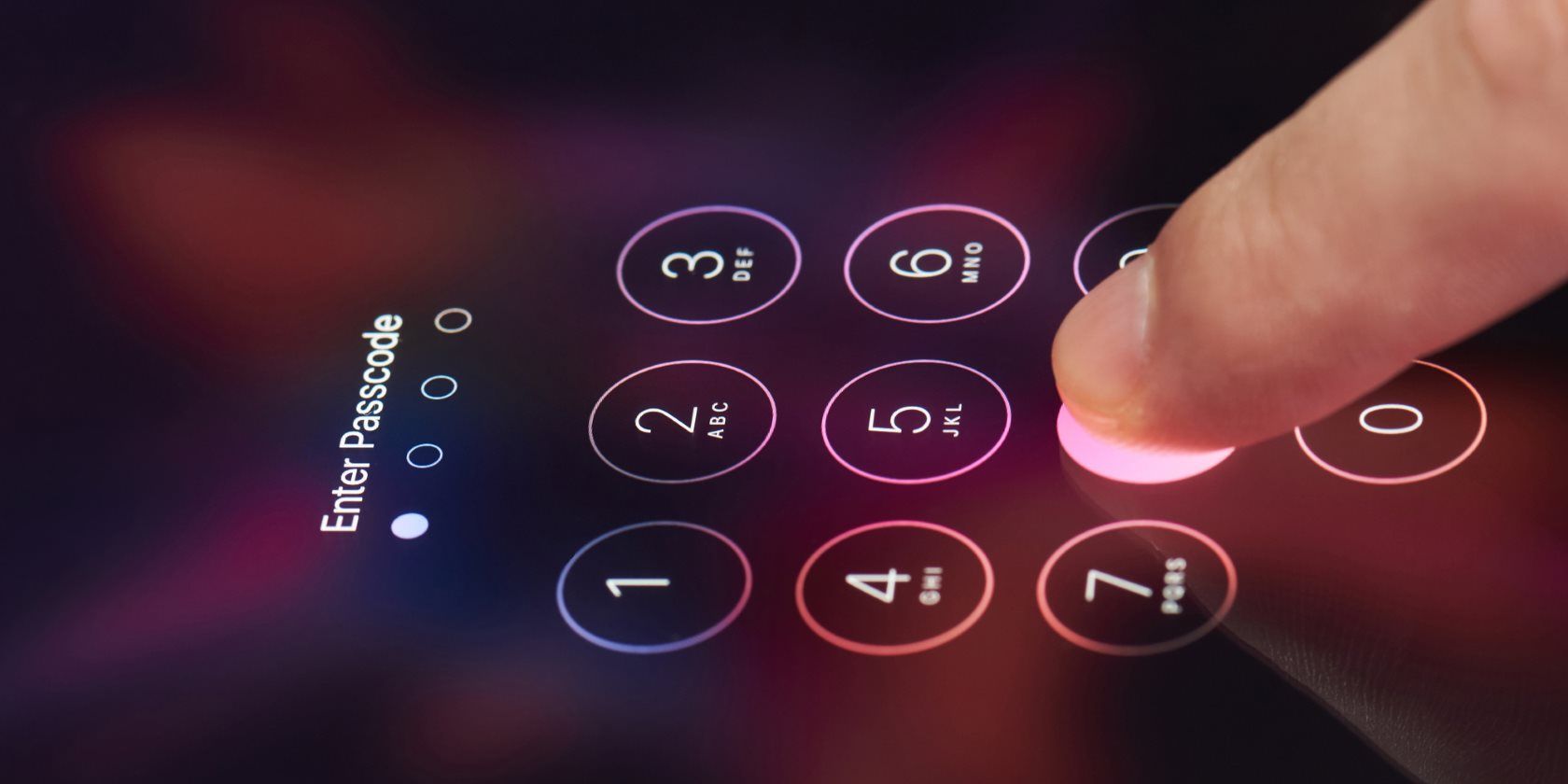Introduction:
In an era where our digital footprint is constantly expanding, the imperative for robust privacy and security measures has never been more paramount. As iPhone users, we often labor under the misconception that our devices inherently shield our personal data, but the reality is far more nuanced. In this comprehensive guide, we’ll delve into the hidden recesses of iPhone privacy, unveiling the essential steps you can take to reclaim dominion over your digital life and fortify the sanctity of your sensitive information.

Are you weary of feeling like your iPhone is perpetually betraying your trust? Do you harbor concerns about the extent to which your personal data is accessible to tech titans and potential cyber threats? If so, this definitive guide is your gateway to regaining control.
Uncover the hidden vulnerabilities lurking within your iPhone’s default settings and arm yourself with the knowledge to fortify your device’s defenses. From mastering advanced data encryption to leveraging biometric security features, we’ll equip you with the tools and strategies to take charge of your digital privacy.
Envision a world where your sensitive documents, personal photos, and private conversations are truly secure, accessible only to you. With the insights and techniques outlined in this article, you can transform your iPhone into an impregnable fortress, shielding your digital sanctuary from prying eyes and unwanted intrusions.
By the end of this comprehensive guide, you’ll be empowered to implement a robust privacy and security framework for your iPhone, granting you the peace of mind you deserve. So, let’s embark on this journey and unlock the secrets to safeguarding your digital future.
The Myth of iPhone Privacy:
Contrary to the widespread perception that iPhones are inherently secure, the reality is that privacy on these devices is not a given. While Apple has made commendable strides in enhancing user privacy, the company’s marketing often oversimplifies the issue, leading many users to believe that their data is automatically protected.
The truth is, true privacy on an iPhone requires proactive steps and a deeper understanding of the device’s privacy features. From the default iCloud settings to the way apps access your personal information, there are numerous areas where your data can be vulnerable if left unattended.
In this guide, we’ll debunk the myth of iPhone privacy and provide you with a comprehensive roadmap to reclaiming control over your digital life. By the end, you’ll be equipped with the knowledge and tools to transform your iPhone into a secure fortress, shielding your sensitive information from prying eyes.
Mastering Advanced Data Encryption:
One of the most critical aspects of iPhone privacy is data encryption. While Apple’s default encryption measures are commendable, there are additional steps you can take to bolster the security of your data.
Advanced Data Encryption: The Hidden Gem
Apple’s “Advanced Data Protection” feature is a game-changer when it comes to securing your iPhone’s data. This powerful encryption tool places you, the user, in full command of your encryption keys, effectively preventing even Apple from accessing the content stored in your iCloud account.
To enable Advanced Data Protection:
1. Open the Settings app on your iPhone.
2. Tap on your Apple ID at the top of the screen.
3. Select “iCloud” and then scroll down to “Advanced Data Protection.”
4. Toggle the setting to “On.”
It’s important to note that enabling Advanced Data Protection requires all your devices to be running the latest iOS or iPadOS versions, and you’ll need to set up at least one trusted recovery method, such as a recovery contact or recovery key.
The Benefits of Advanced Data Protection:
– Your data is encrypted end-to-end, with Apple unable to access the content stored in your iCloud account.
– Even if your iCloud account is compromised, your data remains secure due to the encryption keys being under your control.
– Sensitive information, such as health data, notes, and photos, are protected by an additional layer of security.
Unlocking the Power of Biometric Security:
Biometric security features, such as Face ID and Touch ID, are not only convenient but also play a crucial role in safeguarding your iPhone’s data. These technologies go beyond traditional passcode-based protection, leveraging your unique physical characteristics to grant access to your device and sensitive applications.
Face ID: The Facial Recognition Powerhouse
Face ID is Apple’s advanced facial recognition technology that allows you to unlock your iPhone, authorize purchases, and access protected apps with a simple glance. This feature not only provides a seamless user experience but also adds an extra layer of security to your device.
To set up Face ID:
1. Open the Settings app and navigate to “Face ID & Passcode.”
2. Tap “Set Up Face ID” and follow the on-screen instructions to capture your facial data.
3. Once set up, you can choose which features you want to enable Face ID for, such as unlocking your device, approving App Store purchases, and more.
Touch ID: The Fingerprint Authentication Alternative
For those who prefer a more tactile approach to biometric security, Touch ID is an excellent option. This fingerprint-based authentication system allows you to unlock your iPhone, authorize purchases, and access protected apps with the touch of your finger.
To set up Touch ID:
1. Open the Settings app and navigate to “Touch ID & Passcode.”
2. Tap “Add a Fingerprint” and follow the on-screen instructions to capture your fingerprint data.
3. Once set up, you can choose which features you want to enable Touch ID for, similar to the Face ID setup process.
The Power of Biometric Security:
– Biometric authentication provides a more secure alternative to traditional passcode-based protection, as it’s much harder for an intruder to replicate your unique physical characteristics.
– Face ID and Touch ID can be used to unlock your iPhone, authorize App Store purchases, and access sensitive apps, ensuring that only you have access to your device and its contents.
– These features also offer a seamless user experience, eliminating the need to constantly enter complex passcodes.
Securing Your Accounts with Two-Factor Authentication:
Two-factor authentication (2FA) is a crucial security measure that adds an extra layer of protection to your online accounts, including your Apple ID. By requiring a second form of verification, such as a code sent to your trusted devices or a security key, 2FA significantly reduces the risk of unauthorized access to your sensitive information.
Enabling Two-Factor Authentication for Your Apple ID:
1. Open the Settings app on your iPhone and tap on your Apple ID at the top of the screen.
2. Select “Password & Security” and then tap “Turn On Two-Factor Authentication.”
3. Follow the on-screen instructions to set up your trusted devices and recovery options.
Leveraging Security Keys for Enhanced Protection:
While the standard 6-digit verification code sent to your Apple devices is a good starting point, it’s important to consider using security keys for even stronger 2FA protection. Security keys are physical devices that generate unique codes for account verification, offering an additional layer of security beyond the standard SMS or app-based 2FA methods.
To set up security keys for your Apple ID:
1. Obtain a compatible security key, such as a YubiKey or Google Titan Key.
2. In the “Password & Security” menu of your Apple ID settings, tap “Add Security Key.”
3. Follow the on-screen instructions to pair your security key with your Apple ID.
The Benefits of Two-Factor Authentication:
– Significantly reduces the risk of unauthorized access to your accounts, even if your password is compromised.
– Provides an additional layer of security beyond just a username and password, making it much harder for attackers to gain access to your sensitive information.
– Offers the option to use security keys for even stronger protection, ensuring that only you have the physical device required to verify your identity.
Taming the Notification Beast:
Notifications are a double-edged sword – they keep us informed and connected, but they can also be a significant source of distraction and privacy concerns. By taking control of your iPhone’s notification settings, you can minimize the impact of these alerts and safeguard your personal information.
Customizing Notification Settings:
1. Open the Settings app and navigate to “Notifications.”
2. Review the list of installed apps and toggle off notifications for any apps that you don’t need to receive alerts from.
3. For the remaining apps, customize the notification settings to your liking, such as adjusting the alert style, sound, and whether they appear on the lock screen.
Disabling Notification Previews:
One of the most important privacy-focused settings is the ability to disable notification previews on the lock screen. This feature ensures that sensitive information, such as message contents or calendar events, are not displayed for anyone who might have access to your unlocked device.
To disable notification previews:
1. In the “Notifications” settings, tap on “Show Previews.”
2. Select “Never” to ensure that no notification content is displayed on the lock screen.
Limiting App Notifications:
While it’s tempting to stay connected with every app on your iPhone, the constant barrage of notifications can be detrimental to your productivity and privacy. Take the time to review which apps truly need to send you alerts and disable those that don’t.
By taming the notification beast, you can:
– Reduce distractions and improve your focus
– Prevent sensitive information from being displayed on your lock screen
– Minimize the risk of inadvertently sharing personal data through notification content
Mastering the Hidden Photo Album:
One of the lesser-known privacy features on the iPhone is the “Hidden” album within the Photos app. This feature allows you to store sensitive photos and videos out of sight, protected by your device’s biometric security.
Hiding and Unhiding Photos and Videos:
1. Open the Photos app and locate the photo or video you want to hide.
2. Tap the “Share” icon in the bottom-left corner and select “Hide.”
3. To unhide the photo or video, navigate to the “Albums” tab, then select “Hidden” and tap the “Unhide” option.
Accessing the Hidden Album:
The Hidden album is protected by your device’s biometric security, such as Face ID or Touch ID. This ensures that only you can access the sensitive media stored within.
To access the Hidden album:
1. Open the Photos app and tap the “Albums” tab.
2. Scroll down until you see the “Hidden” album.
3. Tap the “Hidden” album and use your biometric security to unlock it.
The Benefits of the Hidden Album:
– Provides a secure location to store sensitive photos and videos, away from prying eyes.
– Ensures that your private media is only accessible to you, thanks to the biometric security integration.
– Offers a simple way to hide and unhide content without the need for third-party apps or complex folder structures.
Decluttering Your Message History:
In the age of instant communication, our message histories can quickly become cluttered with sensitive information, from personal conversations to shared media. By taking control of your message retention settings, you can minimize the risk of data breaches and maintain a clean, organized communication history.
Adjusting Message Retention Settings:
1. Open the Settings app and navigate to “Messages.”
2. Scroll down to the “Message History” section and tap on “Keep Messages.”
3. Select the desired retention period, such as 30 days or 1 year. Alternatively, you can choose “Forever” to keep all messages indefinitely.
The Benefits of Regularly Decluttering Your Messages:
– Reduces the amount of sensitive data stored on your device, limiting the potential impact of a data breach or loss.
– Keeps your message history clean and organized, making it easier to find important conversations.
– Aligns with privacy best practices by not retaining unnecessary personal information.
Backing Up and Storing Your Data Securely:
Regular backups are essential for protecting your iPhone data, but it’s crucial to ensure that these backups are stored securely and in a way that maintains your privacy. In this section, we’ll explore various backup options and discuss the importance of end-to-end encryption.
Backing Up to iCloud:
iCloud is Apple’s built-in cloud storage and backup service, offering a convenient way to safeguard your iPhone’s data. However, it’s important to note that the default iCloud settings may not provide the level of privacy and security you desire.
To enhance the security of your iCloud backups:
1. Enable “Advanced Data Protection” for your iCloud account, as discussed earlier in this guide.
2. Avoid storing sensitive documents, photos, or other personal data in iCloud unless you have enabled Advanced Data Protection.
Backing Up to a Local Computer:
Alternatively, you can back up your iPhone’s data to a local computer using iTunes or Finder (on macOS Catalina and later). This approach offers more control over your backup data and can be a more secure option, depending on your computer’s security measures.
Utilizing End-to-End Encrypted Cloud Storage:
For the ultimate in data privacy and security, consider using a cloud storage service that offers end-to-end encryption, such as Internxt. These services ensure that your data is protected from prying eyes, even from the service provider itself.
To set up secure cloud storage:
1. Choose a reputable end-to-end encrypted cloud storage provider, such as Internxt.
2. Download the provider’s app or access their web-based interface.
3. Configure the service to automatically back up your iPhone’s data, ensuring that your sensitive information is stored securely.
The Benefits of Secure Backups:
– Protects your data in the event of device loss, theft, or damage.
– Ensures that your personal information remains private, even if your backup is accessed by unauthorized parties.
– Provides peace of mind knowing that your critical data is safeguarded using the latest encryption technologies.
Taming App Permissions and Tracking:
While the convenience of smartphone apps is undeniable, many of these applications have a tendency to overstep their boundaries when it comes to accessing your personal data. By carefully managing app permissions and tracking settings, you can regain control over your digital privacy.
Reviewing and Restricting App Permissions:
1. Open the Settings app and navigate to “Privacy.”
2. Review the list of app permissions, such as access to your location, contacts, photos, and more.
3. Tap on each permission type and adjust the settings to only allow access to the apps that truly require it.
Disabling App Tracking:
The introduction of Apple’s App Tracking Transparency feature has given users more control over how their data is used for targeted advertising. By disabling app tracking, you can limit the ability of apps to share your information with third-party advertisers.
To disable app tracking:
1. Open the Settings app and navigate to “Privacy” > “Tracking.”
2. Toggle the setting to “Ask App Not to Track” to prevent apps from accessing your device’s advertising identifier.
Regularly Reviewing and Culling Apps:
As you accumulate more apps on your iPhone, it’s essential to periodically review and remove any applications that you no longer use. This not only frees up storage space but also reduces the number of potential data leaks and security vulnerabilities on your device.
1. Open the Settings app and navigate to “General” > “iPhone Storage.”
2. Review the list of installed apps and identify any that you haven’t used in a while.
3. Tap on the app and select “Delete App” to remove it from your device.
The Benefits of Taming App Permissions and Tracking:
– Reduces the amount of personal data that apps can access, limiting the risk of unauthorized use or sharing.
– Prevents apps from tracking your activities and behavior for targeted advertising purposes.
– Maintains a clean and secure device by regularly removing unused applications.
Securing Your Wireless Connections:
In the digital age, our smartphones are constantly connected to various wireless networks, from our home Wi-Fi to public hotspots. Ensuring the security of these connections is crucial to protecting your sensitive data from potential threats.
Connecting to Trusted Wi-Fi Networks:
Whenever possible, prioritize connecting to trusted Wi-Fi networks, such as your home or office network. These networks are typically more secure and less susceptible to eavesdropping or man-in-the-middle attacks.
Using a VPN for Public Wi-Fi:
When connecting to public Wi-Fi networks, it’s essential to use a Virtual Private Network (VPN) to encrypt your internet traffic and protect your data from prying eyes. This is especially important when accessing sensitive information or conducting financial transactions while on the go.
To set up a VPN on your iPhone:
1. Research and choose a reputable VPN service provider that offers a user-friendly app.
2. Download the VPN provider’s app from the App Store and install it on your iPhone.
3. Follow the on-screen instructions to connect to a VPN server and start encrypting your internet traffic.
Disabling Automatic Wi-Fi Connections:
Your iPhone is designed to automatically connect to known Wi-Fi networks, even if they are not secure. To prevent your device from inadvertently connecting to potentially compromised networks, you can disable this feature.
To disable automatic Wi-Fi connections:
1. Open the Settings app and navigate to “Wi-Fi.”
2. Tap the “Ask to Join Networks” option and select “Off.”
The Benefits of Securing Wireless Connections:
– Protects your data from eavesdropping and man-in-the-middle attacks when using public Wi-Fi.
– Ensures that your device only connects to trusted, secure networks, reducing the risk of unauthorized access.
– Provides an additional layer of privacy and security for your online activities, especially when accessing sensitive information.
Navigating the Minefield of App Privacy:
While the App Store may seem like a safe haven for downloading applications, the reality is that not all apps are created equal when it comes to respecting user privacy. Navigating this minefield requires a vigilant approach to understanding and controlling app permissions.
Conclusions
Before installing any new app on your iPhone.





